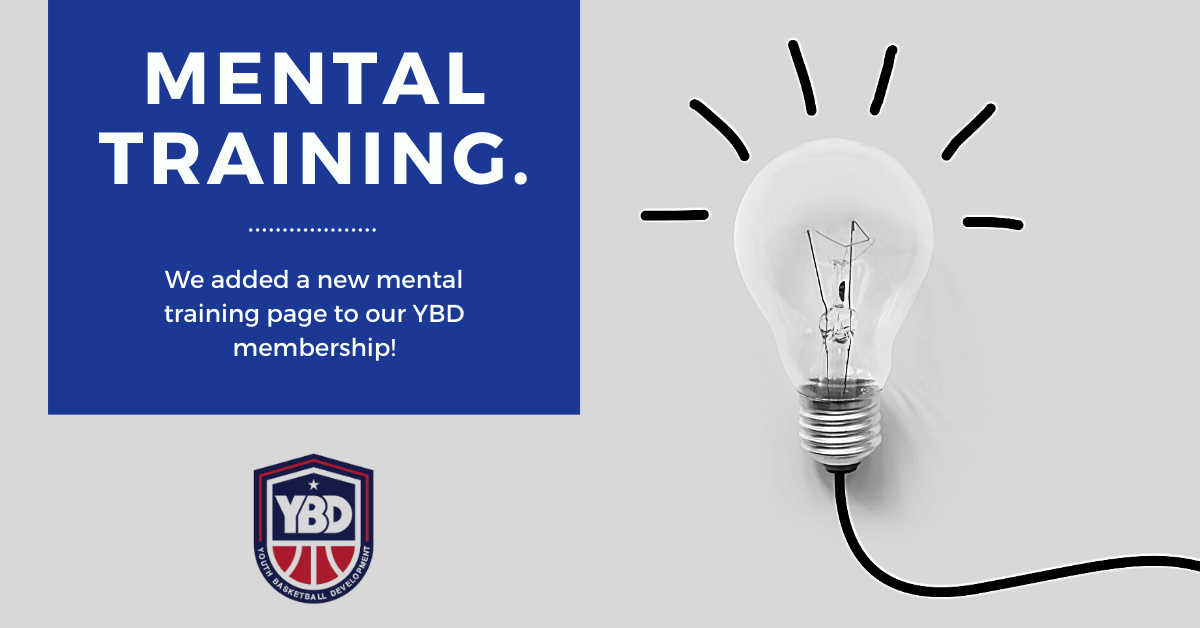LEARN
|
The Why
Mental training helps young athletes play sports with less tension and anxiety. What athletes think affects how they feel and perform, the mind guides action. If athletes succeed in regulating their thoughts, then this will help their behavior. As a result, young athletes can perform and play with more joy and at higher levels. Mental training is deliberate, intentional, and hard training. Like physical skills, mental skills only improve if you do the work. The coaching staff has to support this work and continue the mental development of its players. It is a competitive advantage to do so. Vision and Goals You must have dreams and goals if you are ever going to achieve anything in this world. - Lou Holtz Goal setting is a skill for growth and peak performance. Goals keep everyone on target. Seek progress, not perfection. Be mindful of being present, it can take longer if one eye is always on the goal, as you only have one eye for the journey. What does your athlete want to accomplish in basketball? Have your athletes make a list of three goals and write them down on an index card. They should then post this index card where they will see it frequently throughout the week. The goals should be specific, measurable, actionable (use a verb), relevant, and time specific. An example of a well written goal: I will complete my finishing at the rim and five minute off hand ball handling routine three times per week over the next month or I will play one on one against a stronger player two times per week over the next month. These goals would be different for in-season and off-season training. Process Over Results At the youth level, success is measured not in wins and losses but in the growth and development of your young athletes. Basketball is not a measure of your athlete’s self worth. Your athlete’s value comes from who they are, not from what they do. Judging success by wins and losses is tragically flawed, and pursuing it will leave you and your team completely unfulfilled. By focusing on improvement, work ethic, and the process the wins will take care of themselves and your player’s will play present. The steps of mastery are not constant, but move in steps. There may be discouragement with a plateau in growth but in time this will eventually lead to another growth spurt. Tell your players they know they are going in the right direction if they are saying that this is hard. Lastly, remind your players not to judge themselves by results. Fixed mindset players rarely seek out opportunities to learn or challenge themselves as their self-belief is tied to results. These players shut down against more talented opponents for self-preservation. As coaches, we want our players to be fiercely competitive, play in the present moment, and not tie their self-worth to results. This will lead to improved performance, joy, and outcomes. Breathing Proper breathing helps expel tension and stress and can bring players into the present moment. The act of prolonging exhalation, regardless of inhalation length, promotes the relaxation response and can have a calming effect. Your players’ minds will become more powerful as it becomes calmer and clearer. There are many different rhythmic breathing strategies that are effective. One we find easy to teach is breathing through your nose for a five count, holding for a two count, and then exhaling through your mouth for an eight count. Optimal and practical times for practicing this may be before a team meeting to improve focus or during times of high anxiety when the intensity and tension needs to be turned down. Visualization There is vast research to support the power of visualization. Visualization sharpens and strengthens the muscle memory for the physical activity at hand. It works as the brain does not always differentiate between real and vividly imagined experiences because the same systems in the brain are used for both experiences. You do not have to have a PhD to use visualization activities with your team. To perform simply have your athletes relax by taking a few deep breaths and then have them close their eyes. Have them, from the first-person point of view (through their own eyes versus the eyes of spectators) experience making great plays, talking confidently on the defensive end and in a stance, making shots, over coming a poor call with great body language, and creating plays for their teammates via a pass or solid screen. Really encourage your athletes to feel it, see it, and enjoy it like it was real. Visualization could be done the night before the game, during short bursts during the day, or for 10 minutes two to three times per week. Another way to assist with visualization and strengthening muscle memory is to have your athletes watch video of themselves performing at their best. The imagery can be more instructive than words. This allows the athlete to absorb the images and positive feelings. Self-Talk and Affirmations Your athletes may not have control over how other people talk to them but they do have control over how they talk to themselves. Words put pictures in your mind, which impacts how you feel, which impacts what you do. Most people have been conditioned to tell negative stories about themselves and their performance to appear humble. Negativity is not humility. ...To read more become a YBD member!
0 Comments
Leave a Reply. |
Archives
April 2024
Categories
All
|

 RSS Feed
RSS Feed